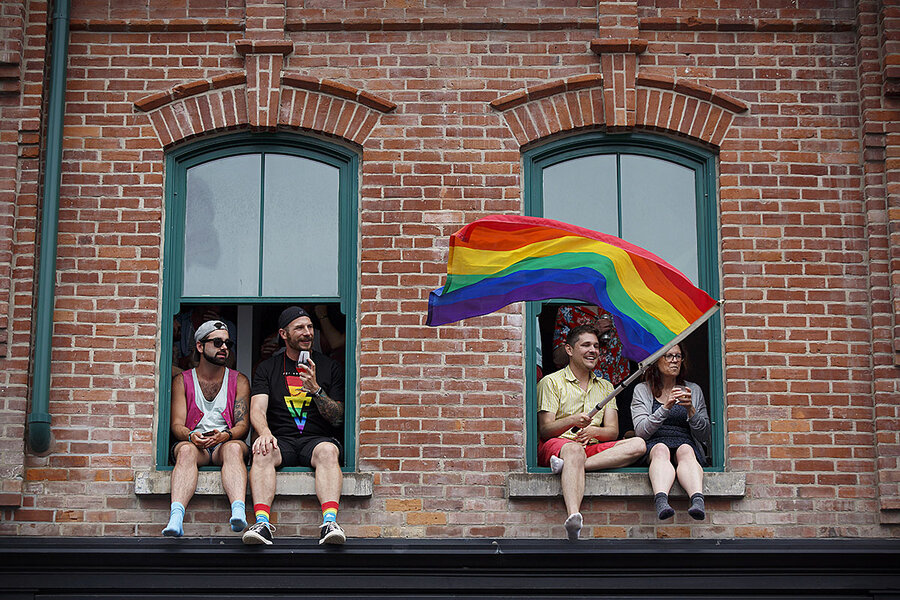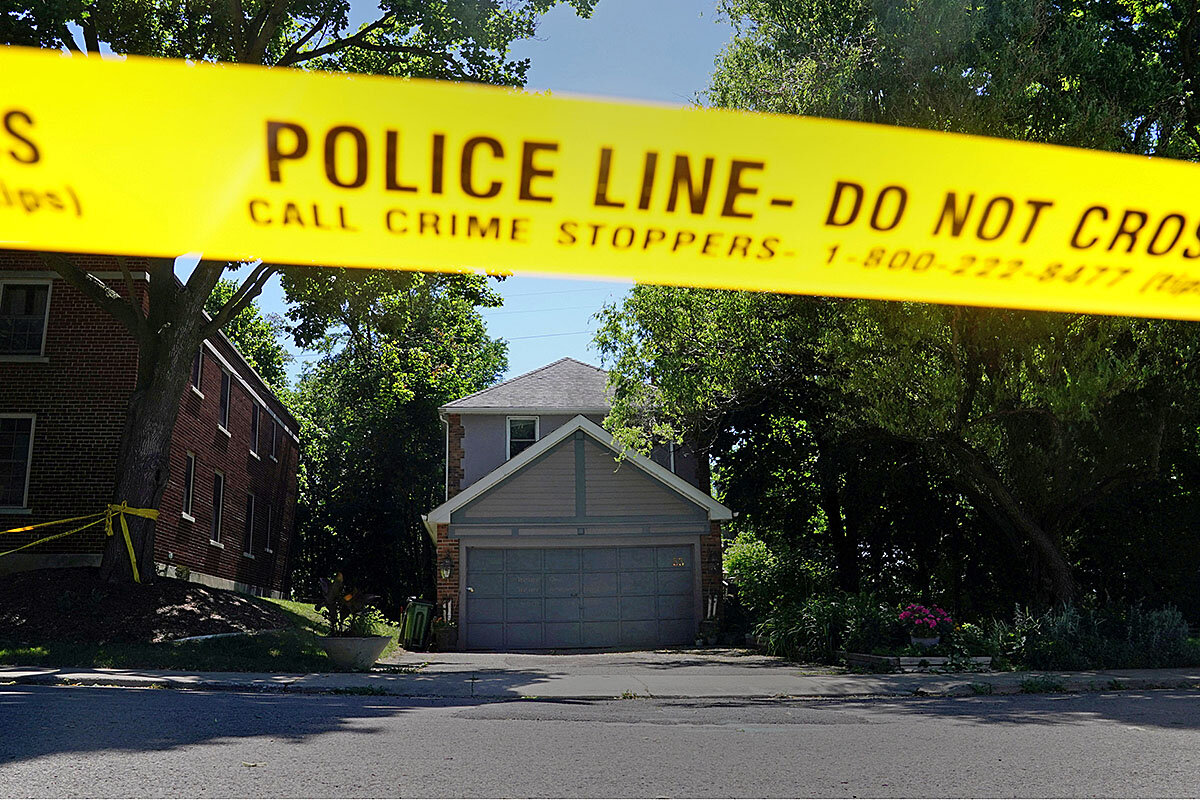Toronto serial killer is behind bars, but a community still seeks peace
Loading...
| Toronto
The sentencing of Canada’s confessed serial killer Bruce McArthur, expected on Friday in a case that, unsolved for most of a decade, terrorized Toronto’s gay community, closes a tragic chapter.
But amid accusations that police for years ignored concerns that the Church and Wellesley neighborhood, known as the “Gay Village,” was being stalked by a killer as disappearances mounted from 2010 to 2017, recovery still feels elusive for many in the LGBTQ community here. While relations with police are strained, the case has also deepened divides in the community itself over how to heal a relationship with the police that has long been fraught.
Mr. McArthur, a former landscaper, pleaded guilty on Jan. 29 to eight charges of first degree murder. His victims were primarily of Middle Eastern or South Asian descent, and many were vulnerable. One was an asylum-seeker whose refugee claim had been rejected. One hid the fact that he was gay from his family, and was leading a double life. As the men disappeared, McArthur continued to date in the community, even as he eluded police.
Why We Wrote This
The scars that a serial killer’s predations leave on a community are deep. But the murders committed by Bruce McArthur restored an old distrust between Toronto’s LGBTQ community and its police.
His guilty plea spares victims a lengthy and emotional trial. But the case leaves many with questions, including ones about police operations that critics say failed to protect society’s minorities and marginalized. It’s been a wake-up call for a community that, despite being part of the mainstream fabric of a city that celebrates its diversity and openness, says justice isn’t applied equally to all.
“You really need to scratch the surface to see that beneath a veneer of liberal tolerance and inclusion, there are an awful lot of problems,” says Gary Kinsman, a professor emeritus in sociology at Laurentian University in Sudbury, Ontario, and longtime activist in the LGBTQ community. “That sort of mythology of Toronto being this very diverse, tolerant city has a lot of problems to it, especially when it comes to the police.”
A killer at large
Gay Village, in the heart of downtown Toronto, is on its surface a celebration of LGBTQ empowerment. Rainbow flags are everywhere, painted as crosswalks, on murals on the sides of brick buildings, on street signs.
But in the past decade, residents say they’d walk down Church Street, the main spine, and notice missing persons posters. Even to the layperson, patterns were apparent. The missing men were mostly dark-skinned and bearded. Rumors of a serial killer mounted.
“You would hear people talking about it in the Starbucks, and you’d hear your friends and your neighbors talking about it,” says Tom Hooper, a resident of the area and historian of police relations with the gay community at York University in Toronto. He says it felt like an uncomfortable joke at first. “I don’t think we were really in a space to believe that this would actually happen in our community.”
By the time McArthur was arrested last January, the case turned even more surreal. He had dismembered his victims and buried them in planters he kept on a property he used for his landscaping business.
McArthur had been on the police’s radar, including in 2016 when he was briefly arrested for a charge that he attempted to strangle a man in the back of his van. He was also convicted of assault in 2003. A month before he was arrested, after his last known victim disappeared, Toronto’s Police Chief Mark Saunders told the public that the evidence did not suggest a serial killer was on the loose.
The police have defended their work. McArthur’s case was incredibly complex and unusual, criminologists say, given his age and his persona, a man who had even played the role of Santa at a shopping mall.
Jooyoung Lee, an associate professor of sociology at the University of Toronto who teaches a class on serial homicide, says division between police and communities are common in the wake of homicide, where there is both relief at an arrest and frustration that a killer operated for so long, often out in the open like McArthur.
“Serial homicide investigations are notoriously difficult,” he says. “They’re really rare, so most police officers don’t have firsthand experience on a serial homicide investigation,” he says. “But on the other hand, as a sociologist who studies crime, I also know that ... missing persons cases don’t elicit uniform responses from the police.”
‘The target of their surveillance’
The case is compounded by historic baggage, says Mr. Hooper. This year marks the 50th anniversary of the decriminalization of homosexuality in Canada. But surveillance of the gay community persisted well beyond 1969.
Most well-known are the infamous 1981 bathhouse raids in Toronto, when almost 300 gay men were arrested under “bawdy house,” or brothel, laws. Most of those arrested were found innocent of the charges against them. The police action led to large protests over harassment of Toronto’s gay community, and ultimately came to be regarded as equivalent to the 1969 Stonewall riots in New York. The police only issued a formal apology for the raids in 2016.
“In the 1970s when a white, gay man was walking on the street ... he immediately saw the uniform, and the hair on the back of his neck stood up,” Hooper says. “Because every time he has seen a police officer in the 1970s, he hasn’t been the target of their protection. He’s been the target of their surveillance.”
Then that changed. “Especially in the ’90s, white gay men started to become the target of police protection instead of their surveillance. And so a lot of the community did feel like there was this improvement, but a lot of the community was also left behind,” Hooper says. “Because for queer people of color when they see a cop on the street ... they think they’re the target of surveillance like everybody understood in the ’70s.”
That is at the heart of questions over how police handled the McArthur case, and what has become so divisive today, symbolized by the upcoming Pride Toronto march in June. The annual event began as a protest against police after the bathhouse raids in 1981, but eventually grew to incorporate officers in uniform in a display of solidarity.
Pride Toronto has barred the police from participating in the parade in uniform over the past three years; the split emerging in 2016 over claims of racist police practices raised by Black Lives Matter Toronto. And it continued this year, when last month the Pride Toronto membership voted, nearly down the middle, against uniformed police inclusion: 161 voted for and 163 against.
Finding a way back
Shawn Ahmed, a gay Muslim born in Canada to refugee parents from Bangladesh, says that the McArthur case has been used as a wedge issue. He says he understands more than anyone the frustration at the police.
“This particular killer had a clear type, and that type was me: brown and South Asian,” he says. It was only after his last victim, a white and well-known activist in the LGBTQ community disappeared, that the case was solved. “I can see why people are using this as an aha moment,” he says.
Police have acknowledged a degree of accountability, by holding an inquiry into the conduct of one officer’s handling of the McArthur case. Federal funds were announced in the fall for Pride Toronto, to help improve relations between LGBTQ communities and the criminal justice system in Canada.
But Mr. Ahmed voted for police inclusion in the June parade. He says police saved his life after a suicide attempt, rescued him after he was assaulted on the street, and are the first called when there is a problem. By shunning them, he argues, the gay community is not safer.
“I get the anger, I get the fear, I share it with them,” he says. “But at the same time it takes both ends to create the solution and to prevent future tragedies.”
Many in the Gay Village say police also carried out some exemplary detective work, but it’s been drowned out by the controversy. That has also cast a shadow over a community that has, despite divisions, shown signs of pulling back together. One community organization created a new system for those going on dates to email their contact info and intended destination to the group. If a dater doesn’t check in within 24 hours, the group tries to contact him or her. If there is no contact within 48 hours, the group contacts the LGBTQ liaison officer at the Toronto police.
“People are saying, ‘We’re not going to be defined by this horrific tragedy and what this one person did to certain members of this community. We’re going to be defined by love and by leading the kind of lives that make this community so special and resilient,’ ” says Dr. Lee. “Seeing the Gay Village thrive in the aftermath is encouraging.”







